
1.Indicate the expected major product of the following reaction Page
Page 1 1. Indicate the expected major product of the following reaction: CH3 CH3 Cl NaOEt ? A) CH3 OEt CH3 B) CH3 CH3 C) CH3 CH3 D) CH3 OEt CH3 E) CH3 CH2 Ans: E
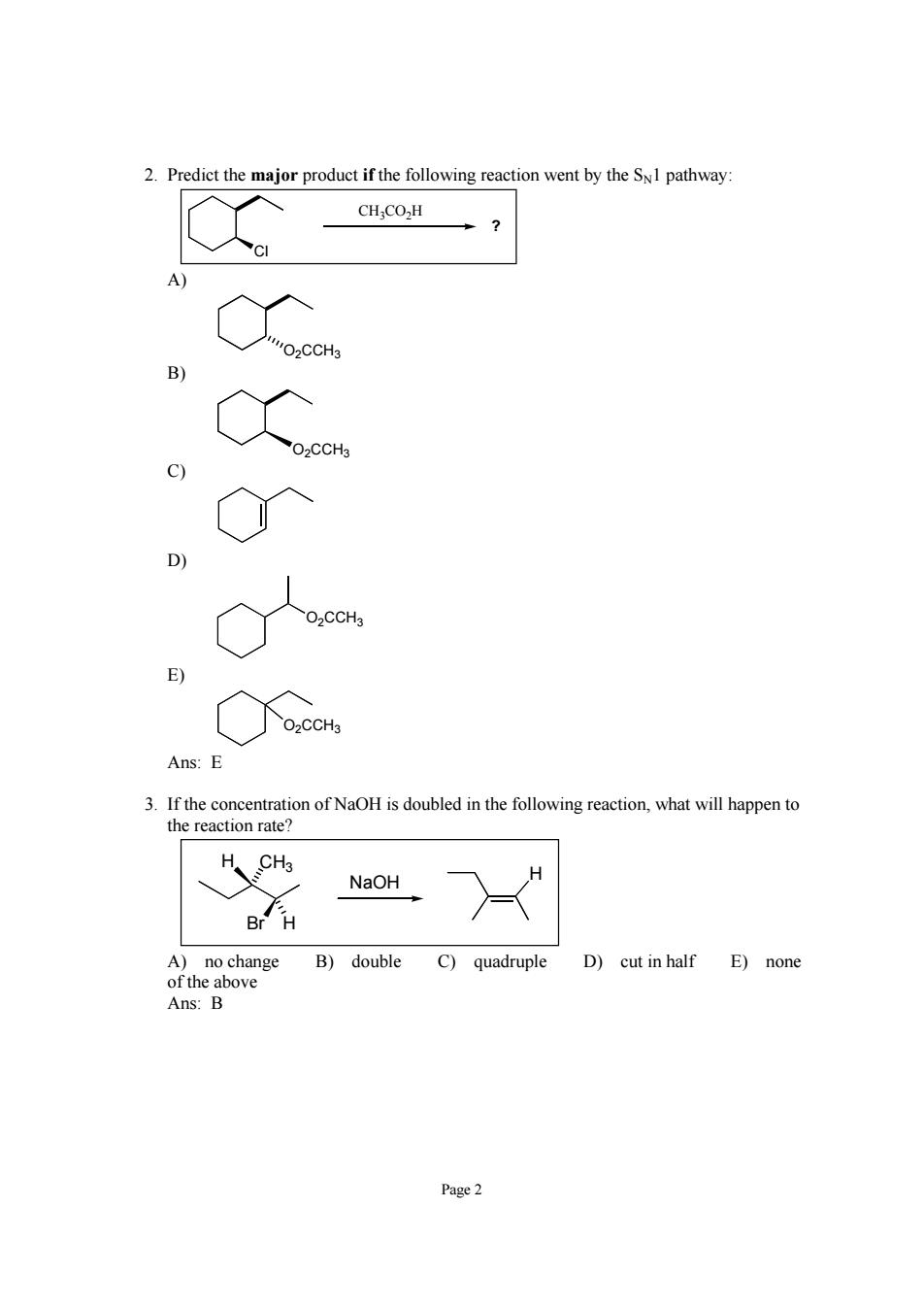
2.Predict the major product if the following reaction went by the S pathway: O.CCH Ans 3.f the of NaOH is doubled in the following reaction,what will happen to the reaction rate? Br H A)no change B)double C)quadruple D)cut in half E)none Ans:B Page2
Page 2 2. Predict the major product if the following reaction went by the SN1 pathway: Cl CH3CO2H ? A) O2CCH3 B) O2CCH3 C) D) O2CCH3 E) O2CCH3 Ans: E 3. If the concentration of NaOH is doubled in the following reaction, what will happen to the reaction rate? Br H H CH3 H NaOH A) no change B) double C) quadruple D) cut in half E) none of the above Ans: B
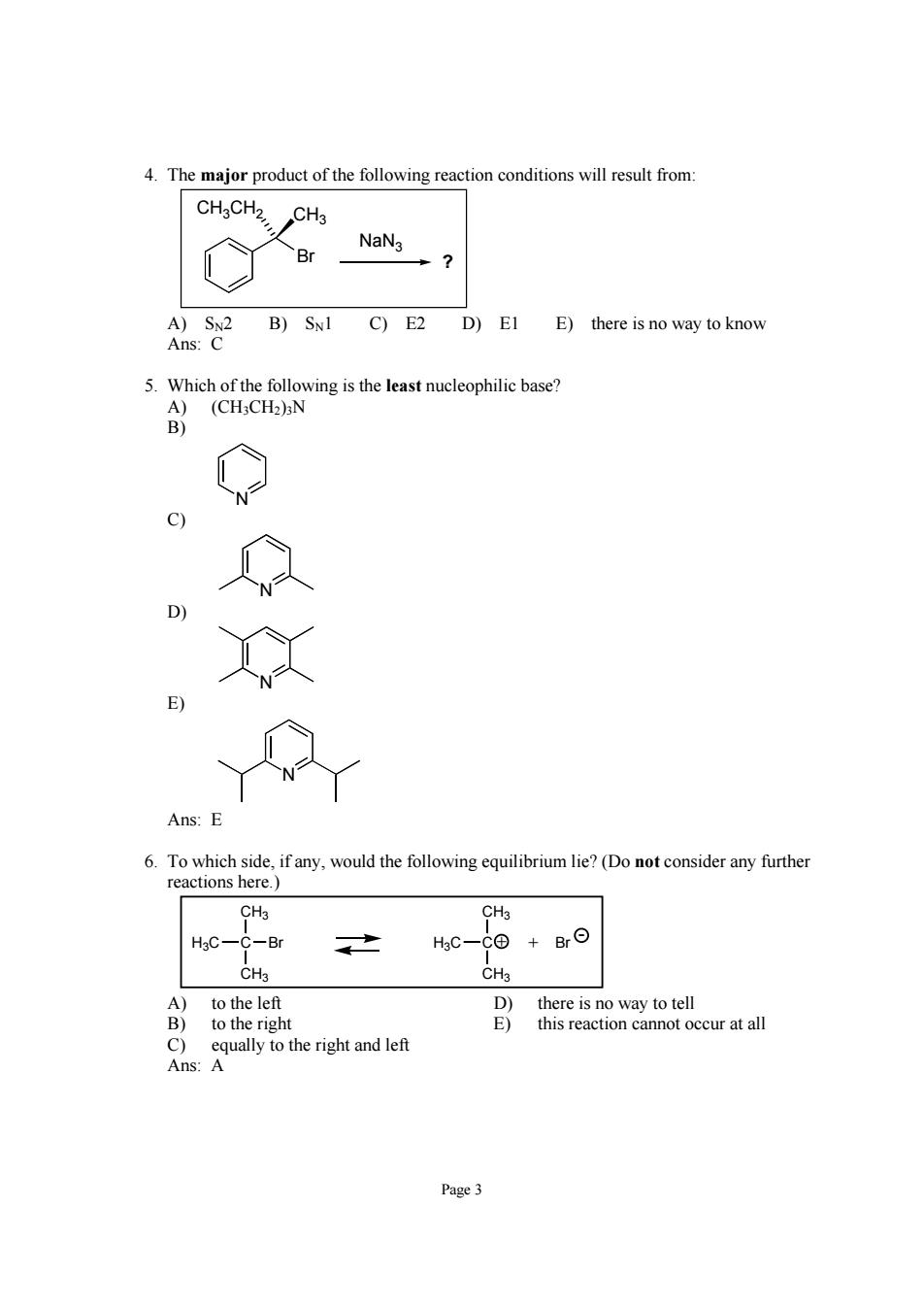
4.The major product of the following reaction conditions will result from: Br NaNs A)SN2 B)Sx1 C)E2 D)E1 E)there is no way to know Ans:C 5.Which ofhe follwing isthe easuii base? B)(CHCH)N Ans:E 6.To which side,if any,would the following equilibrium lie?(Do not consider any furthe reactions here.) 0+Br⊙ CH3 8盟 C)equally to the right and left Ans:A' Page3
Page 3 4. The major product of the following reaction conditions will result from: Br CH3 CH3CH2 NaN3 ? A) SN2 B) SN1 C) E2 D) E1 E) there is no way to know Ans: C 5. Which of the following is the least nucleophilic base? A) (CH3CH2)3N B) N C) N D) N E) N Ans: E 6. To which side, if any, would the following equilibrium lie? (Do not consider any further reactions here.) CH3 C CH3 H3C Br CH3 C CH3 H3C Br + + - A) to the left D) there is no way to tell B) to the right E) this reaction cannot occur at all C) equally to the right and left Ans: A
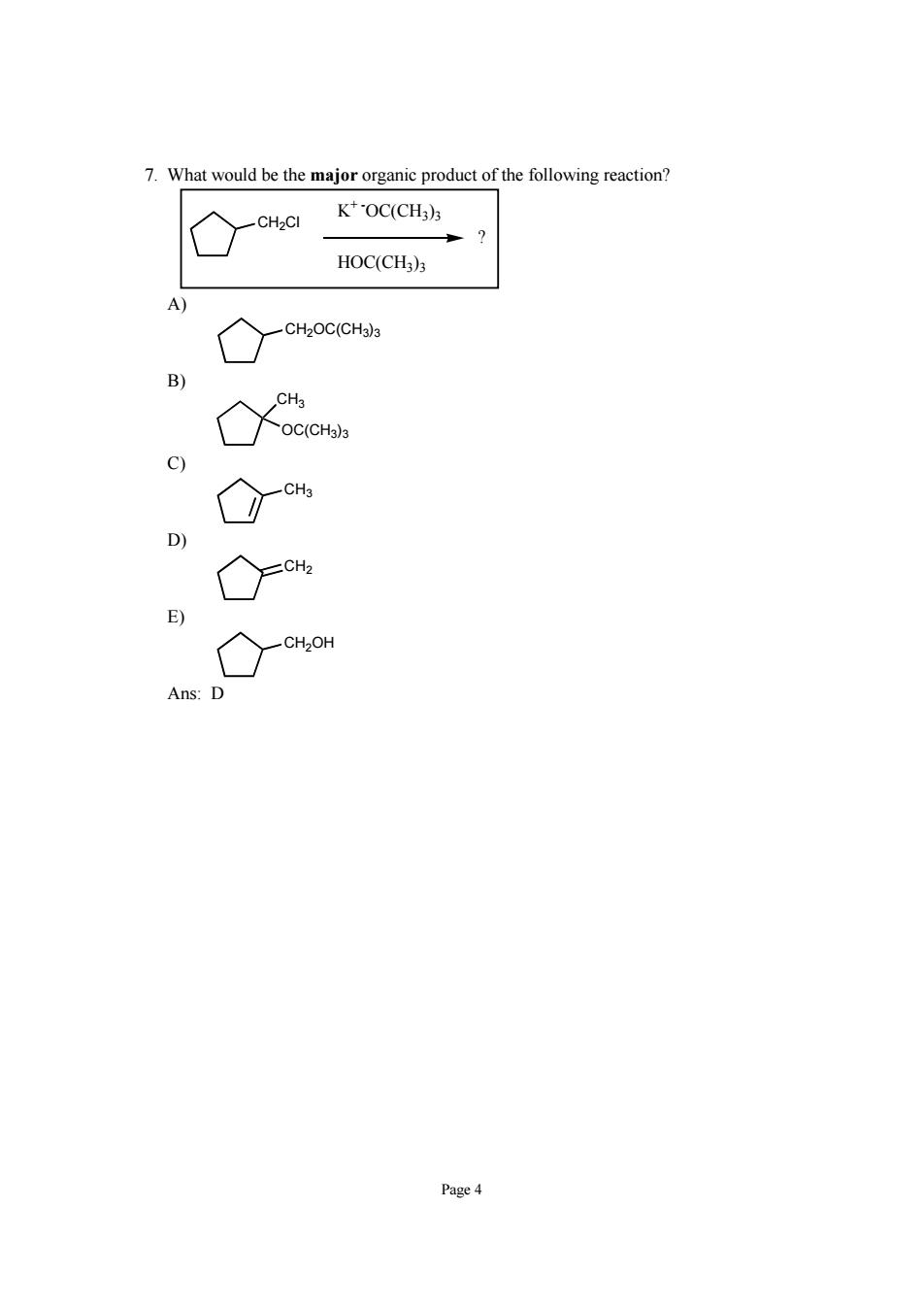
7.What would be the major organic product of the following reaction? ○c K*OC(CH3)3 HOC(CH为 CH2OC(CHa) e) CH3 D \nc Page4
Page 4 7. What would be the major organic product of the following reaction? CH2Cl K+ -OC(CH3)3 HOC(CH3)3 ? A) CH2OC(CH3)3 B) CH3 OC(CH3)3 C) CH3 D) CH2 E) CH2OH Ans: D

8.What would be the major organic product of the following reaction? CD, CHONa' OCH3 9 心 (racemic Ans Page5
Page 5 8. What would be the major organic product of the following reaction? C CH3 Br CD3 CH3O- Na+ ? A) C CH2 CD3 B) C CH3 OCH3 CD3 C) C CH3 OCH3 CD3 D) C CH3 CD2 E) OCH3 C CH3 CD3 (racemic) Ans: A
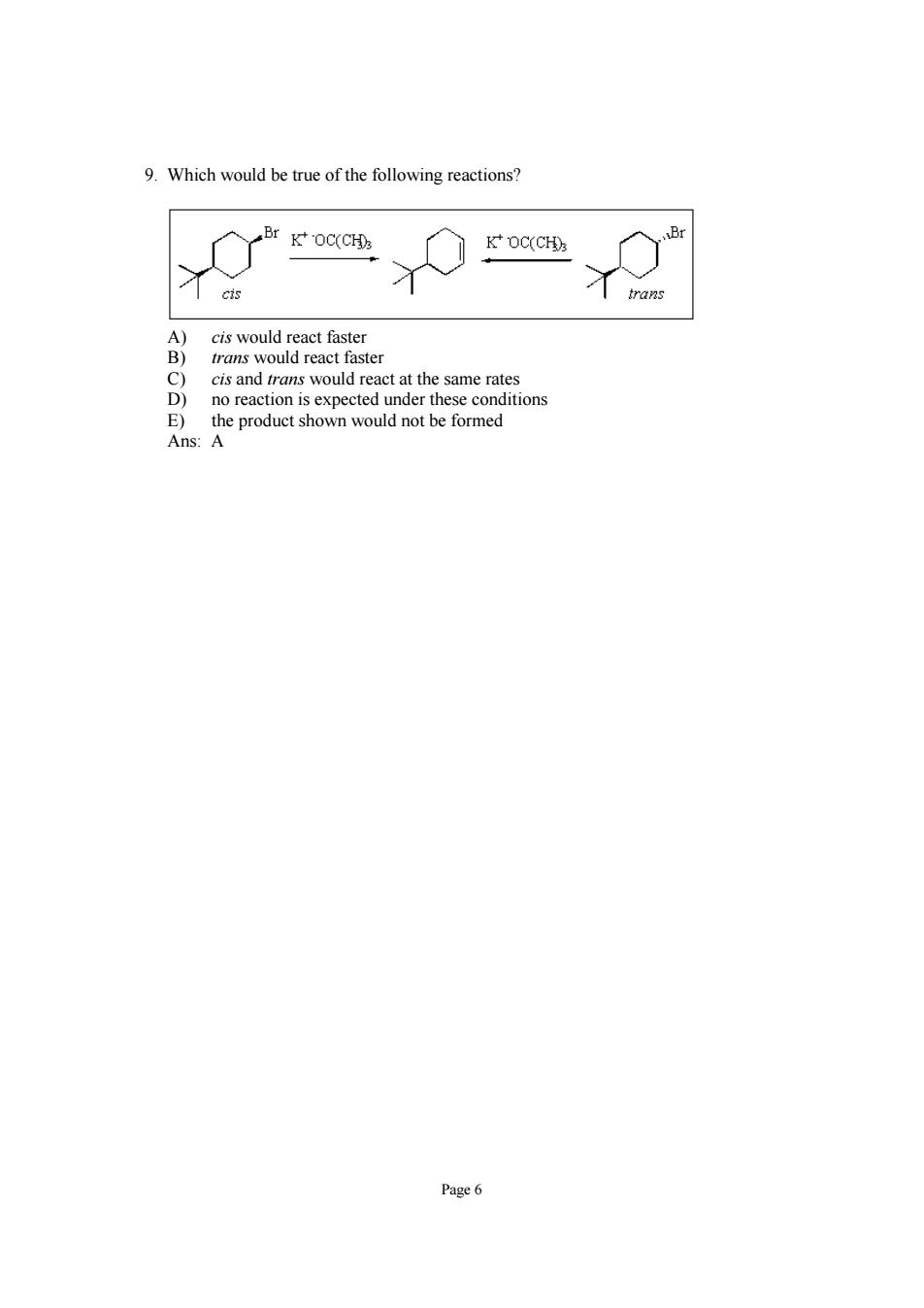
9.Which would be true of the following reactions? Kocrcw cis trans cis would react faster trans would react faster cis and trans would react at the same rates no reaction is expected under these conditions the product shown would not be formed Page6
Page 6 9. Which would be true of the following reactions? A) cis would react faster B) trans would react faster C) cis and trans would react at the same rates D) no reaction is expected under these conditions E) the product shown would not be formed Ans: A
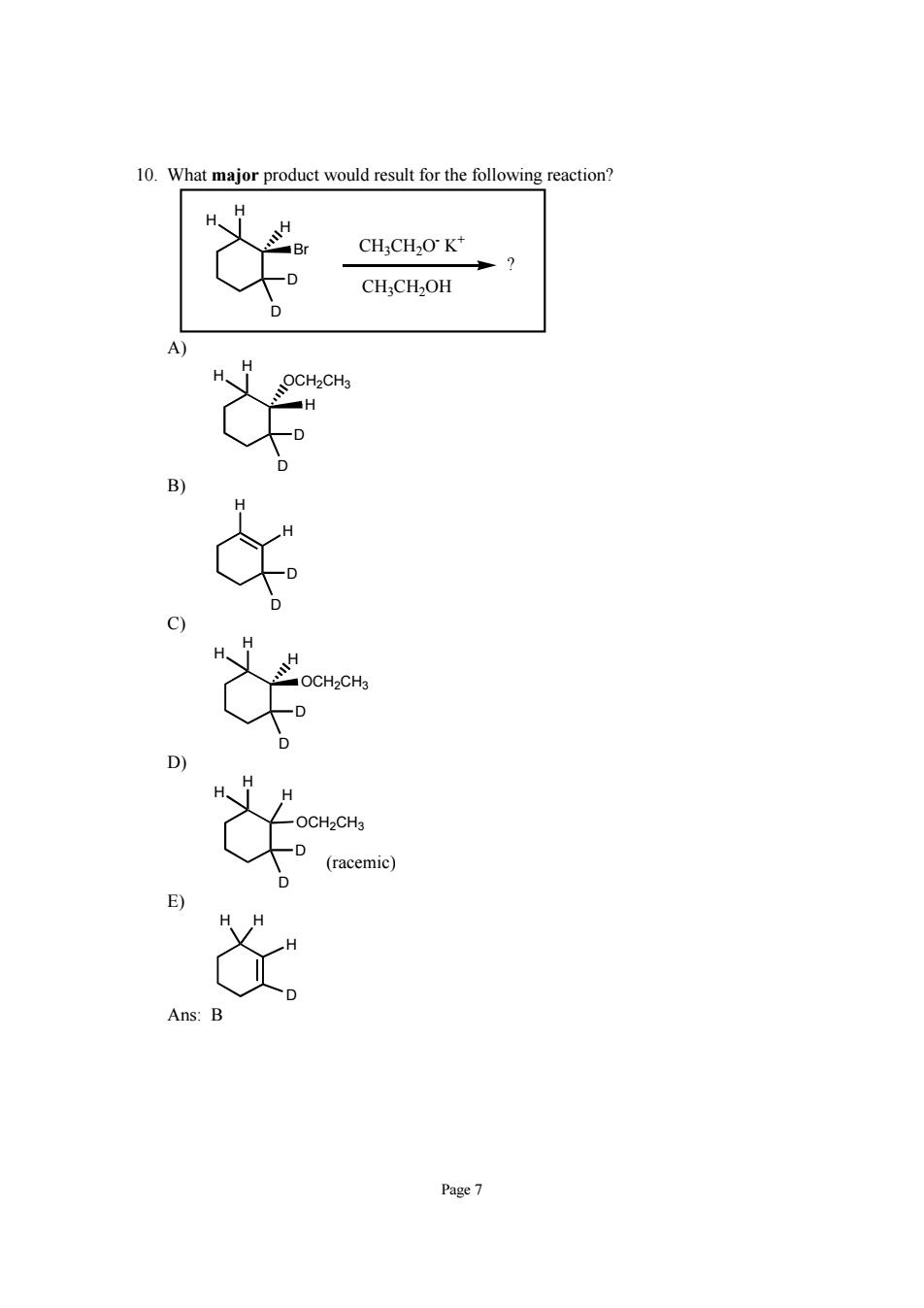
10.What major product would result for the following reaction? CH:CH2O K* CHCH2OH Page7
Page 7 10. What major product would result for the following reaction? Br H H D D H ? CH3CH2OH CH3CH2O- K+ A) OCH2CH3 H H D D H B) H D D H C) OCH2CH3 H H D D H D) OCH2CH3 H H D D H (racemic) E) H H D H Ans: B
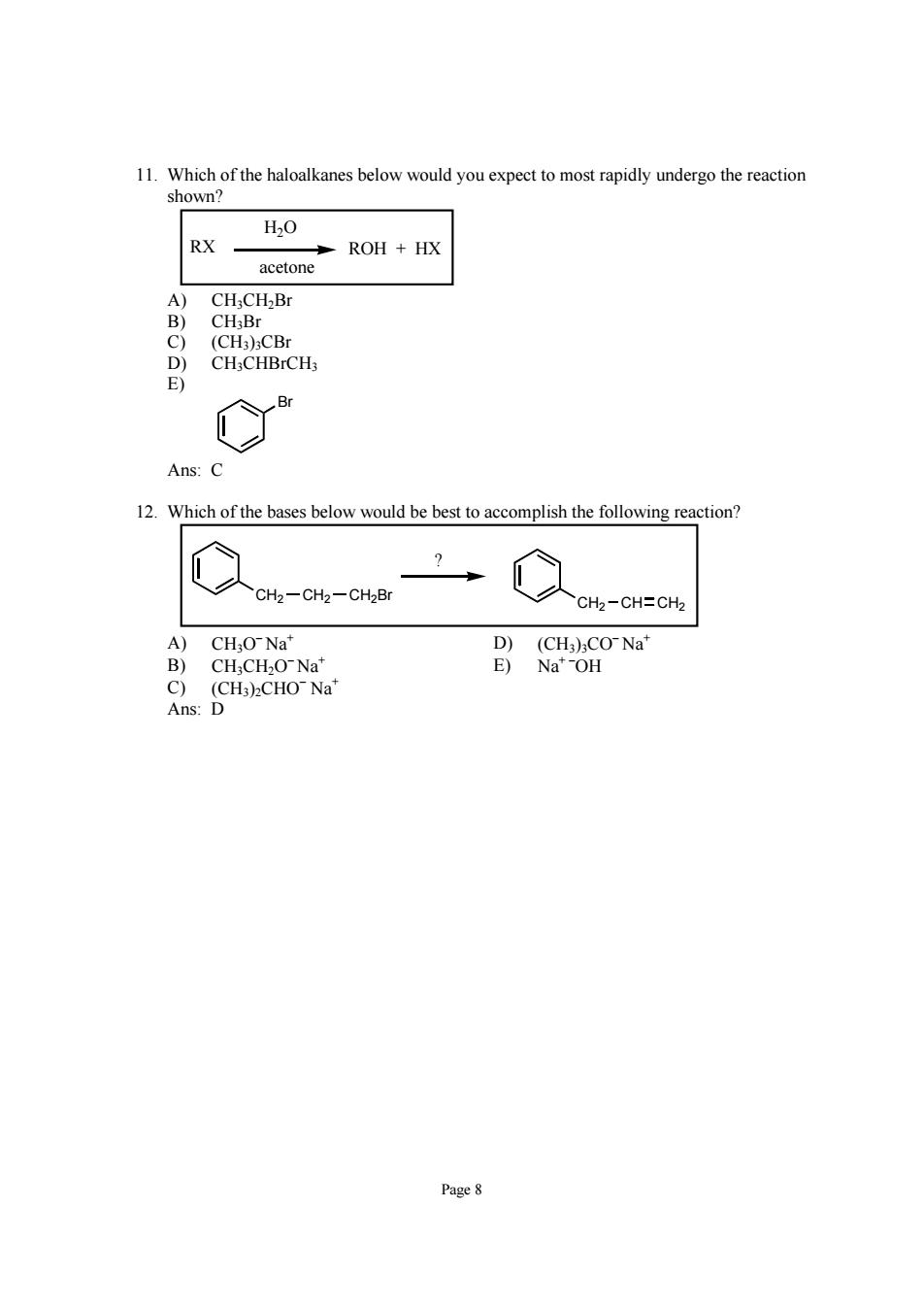
11.Which of the haloalkanes below would you expect to most rapidly undergo the reaction hown? H20 RX ROH HX acetone A)CH;CH2Br CH;CHBrCH Ans:C 12.Which of the bases below would be best to accomplish the following reaction? CH2-CH2-CH2Br C CH2-CH=CH2 A)CH;O Na* B)CH;CH2O Na* COH Ne C)(CH3)2CHO-Na" Ans:D Page 8
Page 8 11. Which of the haloalkanes below would you expect to most rapidly undergo the reaction shown? RX ROH + HX H2O acetone A) CH3CH2Br B) CH3Br C) (CH3)3CBr D) CH3CHBrCH3 E) Br Ans: C 12. Which of the bases below would be best to accomplish the following reaction? CH2 CH2 CH2Br CH2 CH CH2 ? A) CH3O− Na+ D) (CH3)3CO− Na+ B) CH3CH2O− Na+ E) Na+ − OH C) (CH3)2CHO− Na+ Ans: D
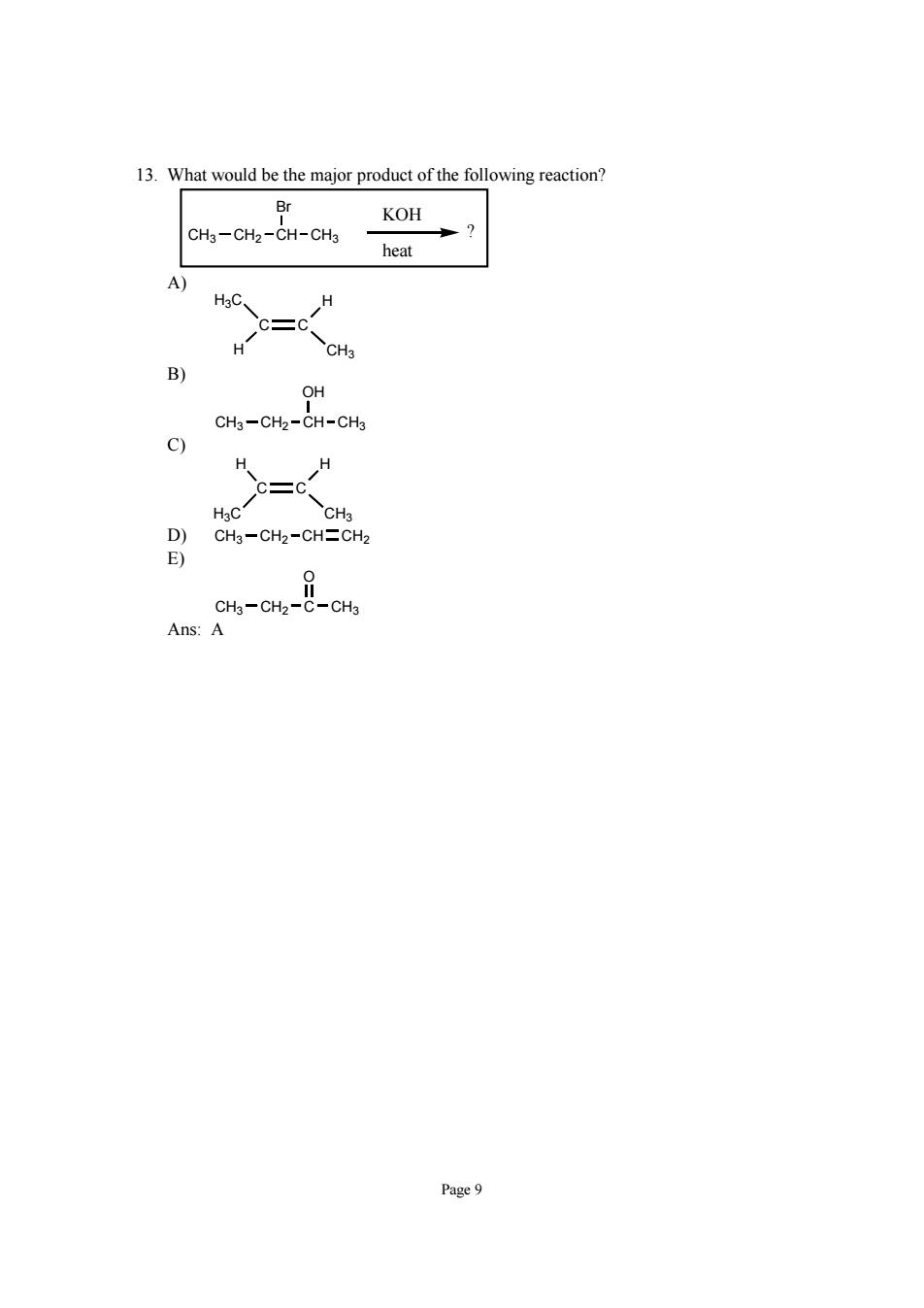
13.What would be the major product of the following reaction? Br KOH CH3-CH2-CH-CH3 heat 4) OH CH3-CH2-CH-CH3 c) HH c=c cH D)CHa-CH2-CH=CH2 CH-C-CH Ans: Page9
Page 9 13. What would be the major product of the following reaction? CH3 CH2 CH CH3 Br ? KOH heat A) H3C C C CH3 H H B) CH3 CH2 CH CH3 OH C) H3C C C CH3 H H D) CH3 CH2 CH CH2 E) CH3 CH2 C CH3 O Ans: A
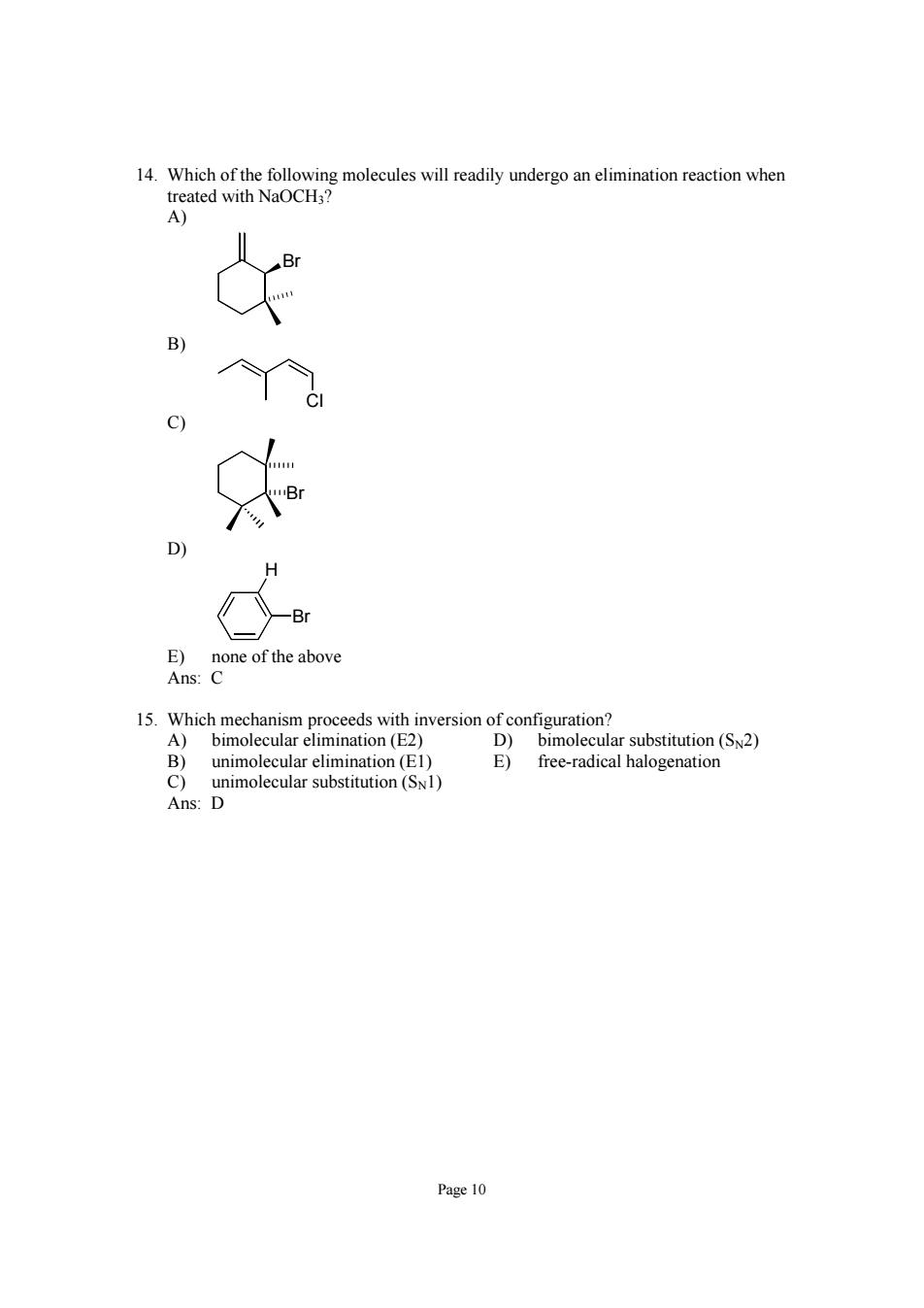
14.Which of the follov )ed with Naoowing molecules will readily undergo an elimination reaction wher 饮 E)none of the above Ans:C rsubstitution(Sx2) free-radical halogenation Ans:D Page 10
Page 10 14. Which of the following molecules will readily undergo an elimination reaction when treated with NaOCH3? A) Br B) Cl C) Br D) Br H E) none of the above Ans: C 15. Which mechanism proceeds with inversion of configuration? A) bimolecular elimination (E2) D) bimolecular substitution (SN2) B) unimolecular elimination (E1) E) free-radical halogenation C) unimolecular substitution (SN1) Ans: D